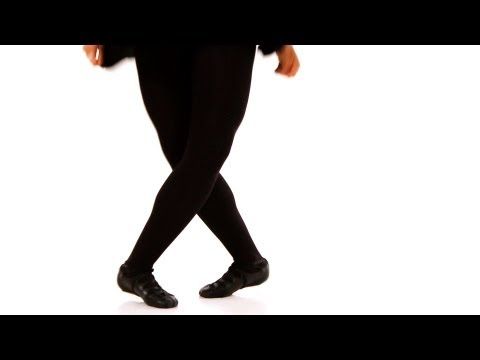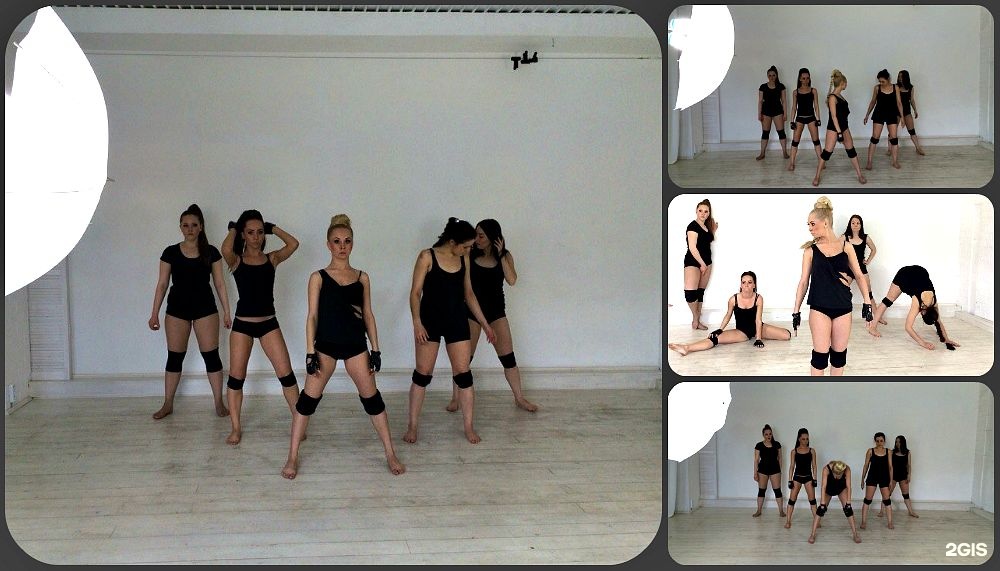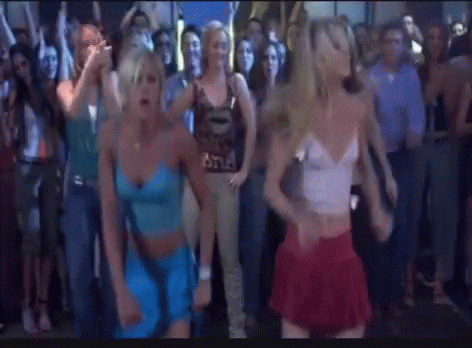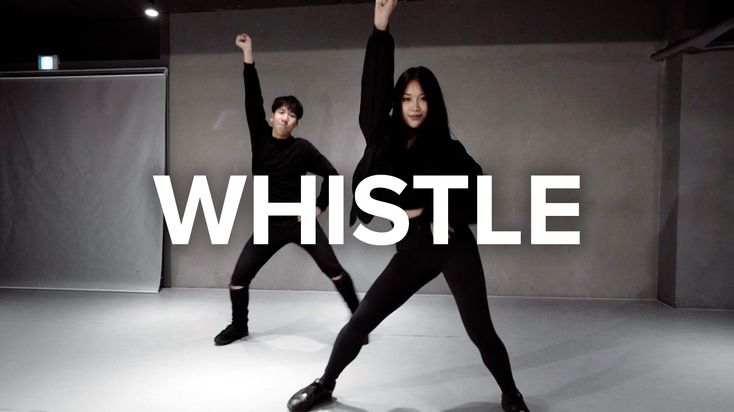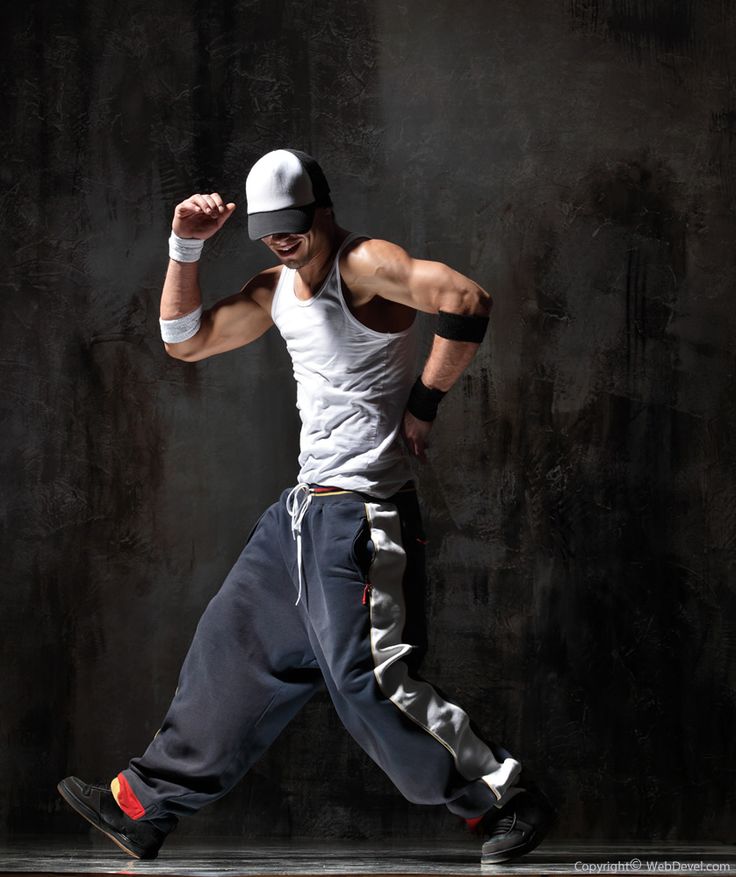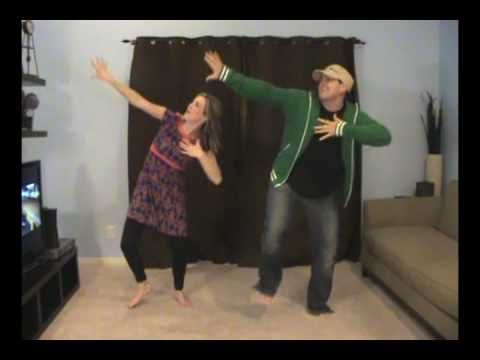Learn how to irish dance
5 Places You Can Learn Irish Dance Online
Irish dance is a beautiful expression of the Celtic spirit in physical form, when we respond to and move to the songs and music of our culture.
But did you know there are many ways you can learn all kinds of Irish dance online, no matter what age you may be.
Online Irish Dance LessonsWe have explored the history and origins of Irish dance and Irish music, and perhaps you have been inspired to pursue learning this unique form of dancing from the Emerald Isle.
You might not want to pursue Irish dance instruction in person. Remote Irish dance lessons can be amazing for multiple reasons:
- you don’t have to find a studio in your own area,
- you don’t have to leave the home at night,
- you don’t need to follow a dress code,
- you have a much lower risk of infection,
- you can go at your own pace,
- and you usually won’t have others watching you like you would in a group setting.
I’ve compiled a list of 5 places you can learn Irish dance online, and after each one I have the pros and cons of each option (although these might vary, based on your personal goals).
I hope you can find the place that’s best for you to learn a beautiful new skill!
Irish Dance Courses
There are 8 qualified Irish dance teachers on this website who have their own bios and dance history on their pages. You can learn Sean Nós dance, set dancing, two hand dance, old style Irish step dancing, modern Irish step dancing, and traditional Irish folk dances through their selection of Irish dance classes.
Through this site, you get unlimited access to all of their classes. You can pay $21.95 monthly or $219.54 annually. They also offer a free trial if you’d like to check everything out before paying the full price for a membership!
Unfortunately, there is not very much information on their website that is accessible before you start your free trial, but luckily you’ll be able to view everything before you make your own decision.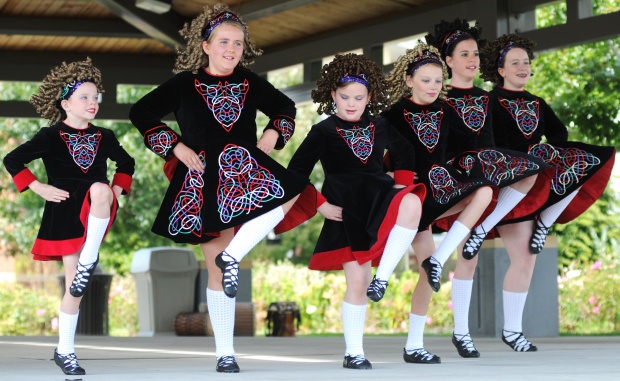
- You can go at your own pace
- 8 different teachers
- Unlimited access to courses with membership
- Not a lot of information accessible on the website before signing up.
- You don’t interact with others.
Learn To Dance
If you’d prefer to learn the basics of Irish dance to see if you like it before investing more money into it, Learn to Dance might be the option for you.
The website isn’t an Irish dance-specific platform, they offer a lot of different styles of dance. There is a free series of videos for people who want to start with the basic techniques of Irish step dance. If you’re interested in learning lots of different styles of dance at a basic level, this could be a fun website to check out!
The website features a lot of different compilations of YouTube videos that instructors uploaded online. When you click on a type of dancing, it brings up a lot of different free videos for beginner dancers.
Pros:
- Some of these courses are free.
- All the videos are available at your fingertips.
- These courses are designed to be beginner-friendly,
Cons:
- There’s no personal help available.
- These are not comprehensive courses.
- Only for beginners
Aistear Mobile Irish Dance Academy
Aistear Mobile Irish Dance Academy has online lessons that will be delivered directly to your email inbox. There is a $25 registration fee, and a $25 monthly membership cost.
This is an email-based Irish dance course. Every Monday, an instructional video will come into your inbox, so if you’re looking for weekly classes, this might be the best choice for you!
There is a trial lesson available on the website, so you can get a sense of whether you would enjoy being part of the academy.
Pros:- New videos weekly
- More of a personal feel
- Limited access to videos
- Not self-paced
Cabe Academy Irish Dance
Cabe Academy is a very professional Irish dance studio headquartered in Dublin whose goal is to spread the joy of Irish dance.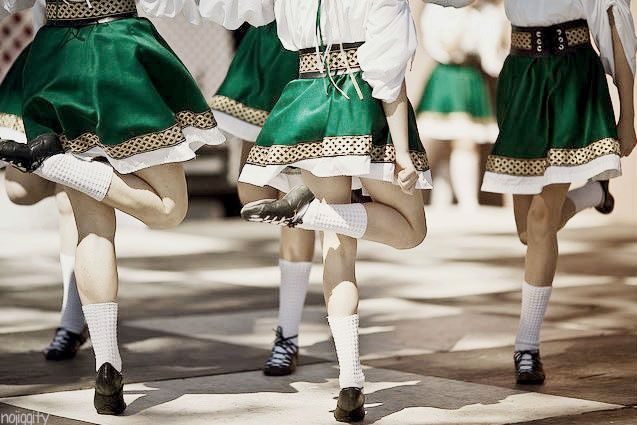 Not only do they have many in-person branches, they have online dance classes featuring qualified instructors, and you can pay for them monthly or purchase lifetime access.
Not only do they have many in-person branches, they have online dance classes featuring qualified instructors, and you can pay for them monthly or purchase lifetime access.
There is a welcome video on their online course’s homepage that will give you a bit of an introduction to who they are and what they do. If you’d like to see their frequently asked questions, you can see all the information on their website as well.
This option stuck out for me because they have options for new beginners who are interested in learning the basic steps, intermediate classes for students who have already taken beginner classes, and a third level for students who are ready for more advanced choreography.
Pros:- Lifetime access option
- 3 different levels
- Professional vibe
- Direct link to Irish culture
- Classes are sold out (at the time of publication)
Kieran Jordan
If the traditional structure of live group classes is more your thing, Kieran Jordan Dance offers Zoom classes!
This is a dance studio in Massachusetts that offers classes for adults and teenagers in person and online.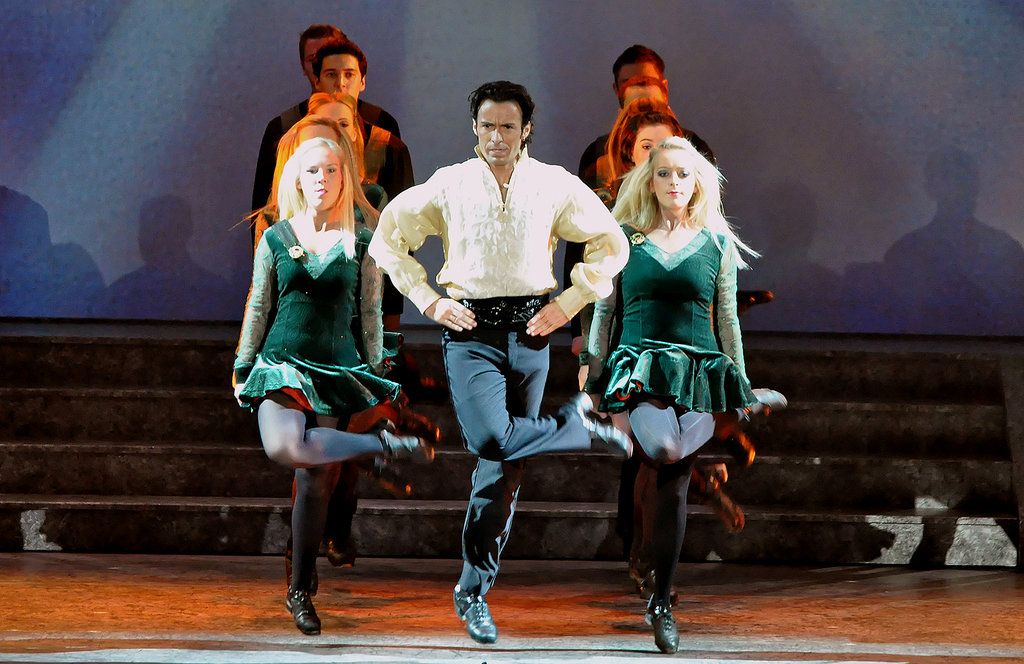
There are private lessons, instructional videos, and online workshops you can partake in.
There is also a range of time commitments, including a 6-week session, a 1-week session, and a one-time session, making it a very customizable experience for new students.
Pros:- Live access to a teacher
- Interaction with others in the class
- Multiple levels of involvement
- Not at your own pace
- Classes aren’t originally created to be online
Happy Irish Dancing
If you’re planning to take some Irish dancing classes, I hope these options lead to an amazing experience for you as you pursue the dance tradition of our culture!
Before you know it you’ll be dancing a few Irish jigs and reels.
Did you know that the reel may have originated in Scotland not Ireland? Here’s a quick look at the origins of the Irish reel dance.
If you have any other favorite online classes, please share them below!
Slán agus beannacht,
(Goodbye and blessings)
Mairéad –Irish American Mom
Pronunciation – rhymes with parade
Share my recipes and ramblings with the world
Beginner Class FAQs | Goodwin Irish Dance
Beginner Irish dancers learn how to clap hands to the beat of music, how to stand ready to dance, how to point their toes, and how to push up onto their toes in a movement similar to what ballet dancers call "releve".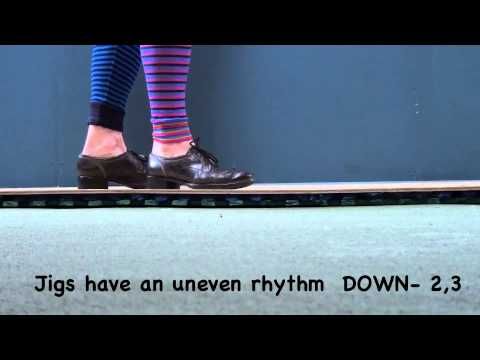 From there, our future Riverdance stars learn the most basic movement of Irish dance, which is called the "1-2-3". This is how Irish dancers move forward direction on a dancefloor! It is then learned in reverse, which is how the dancers move backwards. The next lessons are in how to move to the left and right, while crossing our feet and dancing up on our toes! At each stage, mastery of these movements teaches young learners physical fitness, balance, coordination, timing, rhythm, and patience through repetition. Classes at the beginner levels use lots of games and music to teach these concepts and skills, so that their minds and bodies are challenged in a positive, engaging way! Friendship is also a focus, as the classmates learn to help one another and encourage one another as they learn their first steps as an Irish dancer. Older beginner dancers are progressed rapidly through these first movements, so that they can move into a class that fits their age, ability, and provides an enjoyable social environment.
From there, our future Riverdance stars learn the most basic movement of Irish dance, which is called the "1-2-3". This is how Irish dancers move forward direction on a dancefloor! It is then learned in reverse, which is how the dancers move backwards. The next lessons are in how to move to the left and right, while crossing our feet and dancing up on our toes! At each stage, mastery of these movements teaches young learners physical fitness, balance, coordination, timing, rhythm, and patience through repetition. Classes at the beginner levels use lots of games and music to teach these concepts and skills, so that their minds and bodies are challenged in a positive, engaging way! Friendship is also a focus, as the classmates learn to help one another and encourage one another as they learn their first steps as an Irish dancer. Older beginner dancers are progressed rapidly through these first movements, so that they can move into a class that fits their age, ability, and provides an enjoyable social environment.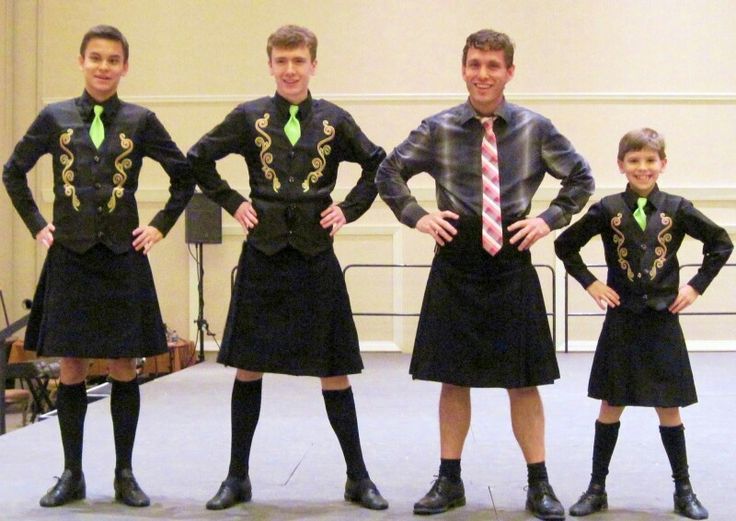
Beginner dancers must wear a mask during class. Dancers are encouraged to wear shorts or yoga/sweatpants, with a tank top or close-fitting t-shirt, as loose pants/shirts can be distracting and sometimes cause injury when the children are moving around in class! Socks must be worn. Dance shoes are not required, but if a dancer would like to wear ballet slippers or borrow used Irish dance shoes from our collection, they are welcome to do so! Dancers should also bring a water bottle.
My child is shy, can we try class first?
We encourage any interested dancer to email us and schedule a time to try the class for free. If a dancer needs a few trial days prior to deciding, that is ok too! As parents ourselves, we understand that children need time and encouragement and should be allowed to have that before making a decision to join a class. There is no commitment or pressure, because beginner class is all about fun and a positive dance experience for your child.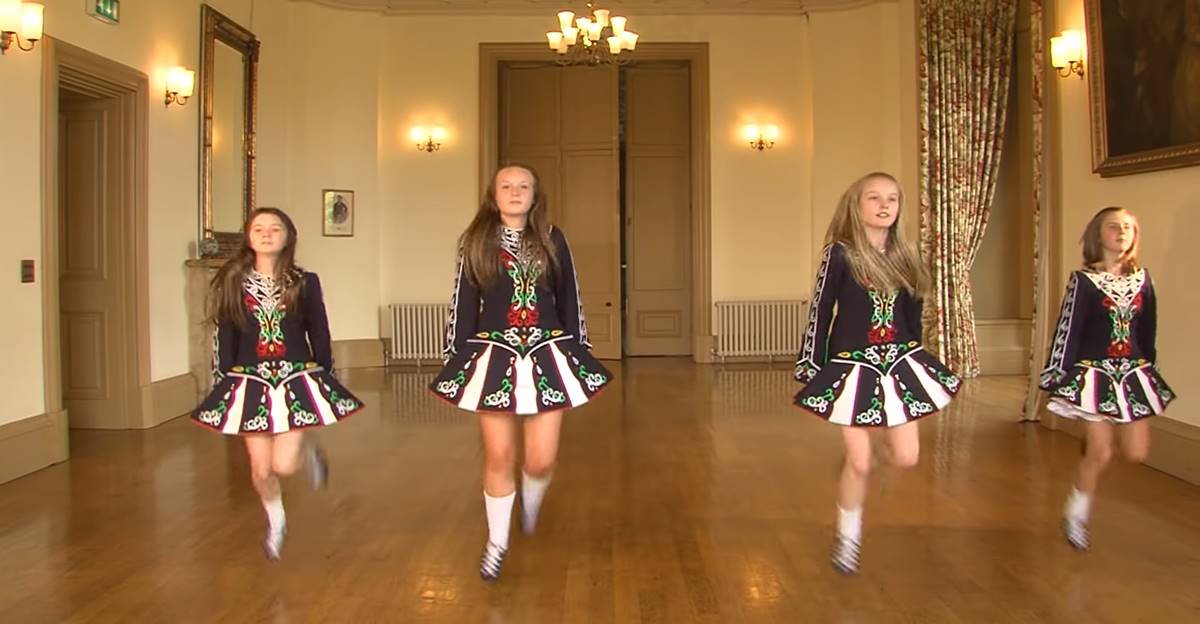
What ages are appropriate for beginner classes?
Dancers ages 4-6 are the perfect fit for our 5:15pm class each Monday. If your dancer is 3 but interested in class, we welcome and encourage you to bring them and see how they do! If your dancer is 7 but feels more comfortable with younger friends, it is ok to have them come to 5:15pm class and see how they like it!
Have an older dancer interested in learning to dance? Try our 6pm class on Monday evenings. Dancers are ages 8+ and love to be challenged and have fun!
We are not sure about the competitive aspect, will my child have to compete?
No child is required to compete. While the majority of students in our advanced classes do compete in both teams and solo events, we have dancers who do not compete and focus more on the performance aspect of Irish dancing. There is a wealth of performance opportunities available to our dancers year-round, including the St. Patrick's Day parade! There are many fun camps and classes offered both at our school and by outside organizations which focus solely on the art of performing Irish dance.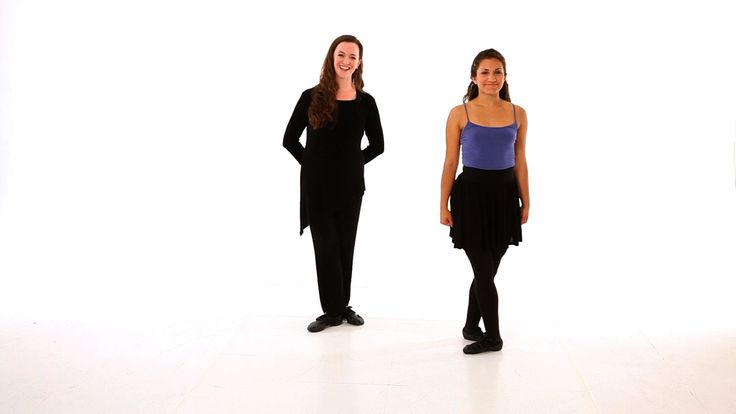 Deciding not to compete does not hold a dancer back from advancing through our classes to the highest level of class.
Deciding not to compete does not hold a dancer back from advancing through our classes to the highest level of class.
Should your child express an interest in trying a competition, or "feis" (fesh), we provide the support, encouragement, and team atmosphere that they dance with joy and a positive attitude. We work hard to ensure that parents and students are prepared with the skills and information they need to enjoy the experience in a healthy way.
What is the schedule and commitment for beginner classes?
Our beginner classes are Mondays 5:15pm (ages 4+), Mondays 6pm (ages 8+). The classes run year round. During the school year, beginner classes are not held during school vacations. There is NO registration fee, and NO commitment. Cost is $45 per month, with convenient online payment and auto-billing available.
You can stop and start beginner class as often as you need in order to accommodate busy family schedules and other extracurricular activities.
how to dance Irish dances, video lessons
Ireland is an unusual and mysterious country, the unique charm of which is given by evergreen hills, ancient castles, and of course amazing dances. National dances are performed only to Irish music and look very beautiful and spectacular, thanks to the speed of movement and rhythm. Currently, this dance direction is extremely popular in many countries. There are many schools and studios that teach jig, reel or hornpipe, but you can learn how to dance Irish dances on your own. Depending on the technique of performance and the number of participants, the following varieties are distinguished:
- Solo, is a rhythmic and clear movement of the legs, while the body and arms are motionless, one person is dancing.
- Group, performed by a group of up to 16 people, and include elements of solo dances with rebuilding in a circle, line or column and the inclusion of hands.
- Folk or social, characterized by simple quadrille-like movements, danced in pairs.

For those who decide to learn how to dance Irish dances on their own, video lessons for beginners will be an excellent tool. It is better to start with a solo direction, which includes: jig, reel, hornpipe and solo sets.
Jig
Performed to the music of the violin. Fun and cheerful jig, consists of traditional jumps and special steps. The jumps are quite high, which makes a lasting impression, but at the initial stage, you should not jump high. First you need to learn how to properly hold the body and press your hands, and most importantly, land softly. Dynamic and spectacular Irish dances can be a serious challenge for beginners.
Reel
Reel is believed to be of Scottish origin, but has been heavily modified to include true Irish elements. Great for beginners and is usually the starting point for learning how to dance Irish dance properly. May be fast or slow.
Fast paced reels have a set of simple movements, while slow ones are characterized by a more complex set of figures, including high jumps.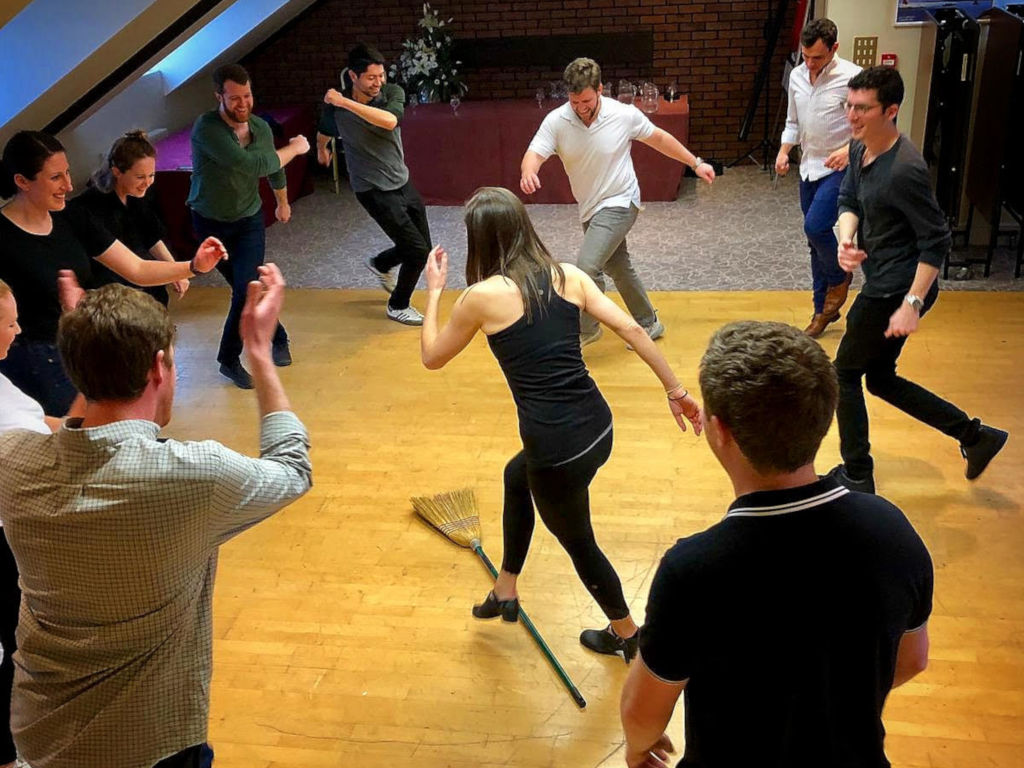 The technique of execution, depending on the type of footwear, can be soft or hard.
The technique of execution, depending on the type of footwear, can be soft or hard.
Hornpipe
Includes jumps and tap dance elements, touching the floor alternately with the heel and toe, creates a drumming effect. Hands are usually located on the belt or extended at the seams, and swings are made with a leg bent at the knee. It is performed only in hard shoes and is the most difficult to master. Somewhat similar to the reel, the hornpipe is notable for its particular dotted rhythm and emphasis on the first count. It can also be slow and fast.
Set solo dances
A distinctive feature is a special set melody, which can be traditional or author's, and differs in its structure from ordinary Irish music. Under such melodies, unique dance compositions are developed, intended for participation in competitions, which will include complex steps and non-traditional elements. From generation to generation in Ireland, the music and steps of solo sets created in the distant past and called traditional are transmitted.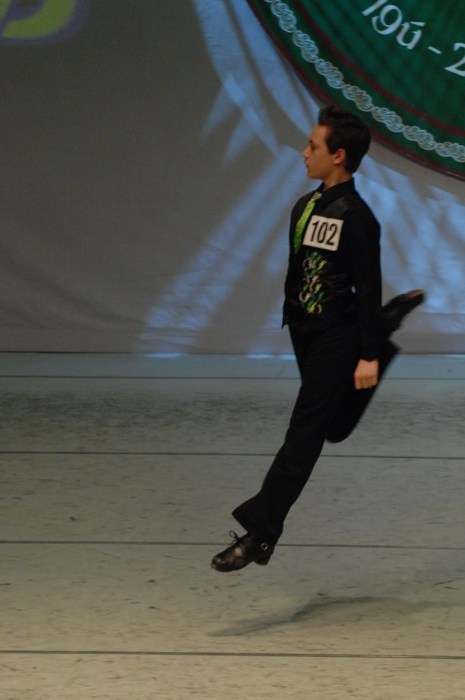
Irish dancing is not only an amazing charge of positive energy and energy, but also a great way to increase stamina and improve physical fitness. Having mastered the basic elements, you can continue to use lessons for beginners to learn Irish dances, or contact a special studio. Speed, clarity and rhythm of movements will come with regular practice.
Video lessons
Katrin Selezneva
Teacher of modern and classical dance, participant in international competitions. Teaching activity in dance schools for 8 years.
Irish Dancing Lessons for Beginners: Simple Movements
Ireland is an unusual and mysterious country, the unique charm of which is given by evergreen hills, ancient castles, and of course amazing dances.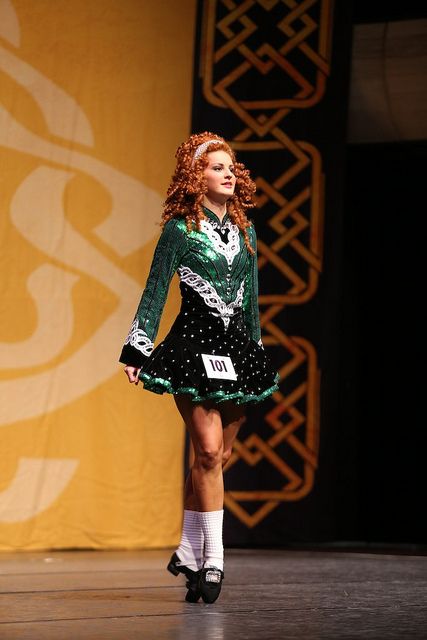 National dances are performed only to Irish music and look very beautiful and spectacular, thanks to the speed of movement and rhythm. Currently, this dance direction is extremely popular in many countries. There are many schools and studios that teach jig, reel or hornpipe, but you can learn how to dance Irish dances on your own. Depending on the technique of performance and the number of participants, the following varieties are distinguished:
National dances are performed only to Irish music and look very beautiful and spectacular, thanks to the speed of movement and rhythm. Currently, this dance direction is extremely popular in many countries. There are many schools and studios that teach jig, reel or hornpipe, but you can learn how to dance Irish dances on your own. Depending on the technique of performance and the number of participants, the following varieties are distinguished:
- Solo, is a rhythmic and clear movement of the legs, while the body and arms are motionless, one person is dancing.
- Group, performed by a group of up to 16 people, and include elements of solo dances with rebuilding in a circle, line or column and the inclusion of hands.
- Folk or social, characterized by simple quadrille-like movements, danced in pairs.
For those who decide to learn how to dance Irish dances on their own, video lessons for beginners will be an excellent tool. It is better to start with a solo direction, which includes: jig, reel, hornpipe and solo sets.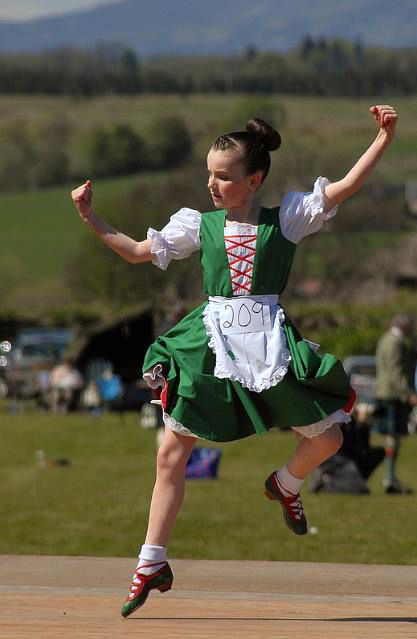
Jig
Performed to the music of the violin. Fun and cheerful jig, consists of traditional jumps and special steps. The jumps are quite high, which makes a lasting impression, but at the initial stage, you should not jump high. First you need to learn how to properly hold the body and press your hands, and most importantly, land softly. Dynamic and spectacular Irish dances can be a serious challenge for beginners.
Reel
Reel is believed to be of Scottish origin, but has been heavily modified to include true Irish elements. Great for beginners and is usually the starting point for learning how to dance Irish dance properly. May be fast or slow.
Fast paced reels have a set of simple movements, while slow ones are characterized by a more complex set of figures, including high jumps. The technique of execution, depending on the type of footwear, can be soft or hard.
Hornpipe
Includes jumps and tap dance elements, touching the floor alternately with the heel and toe, creates a drumming effect.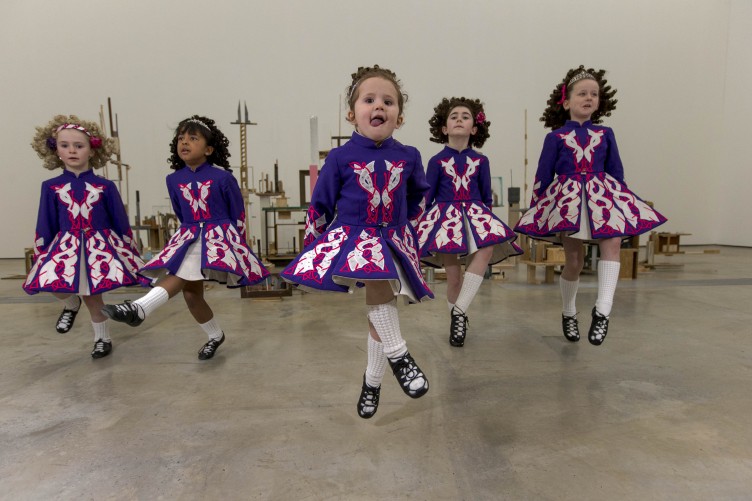 Hands are usually located on the belt or extended at the seams, and swings are made with a leg bent at the knee. It is performed only in hard shoes and is the most difficult to master. Somewhat similar to the reel, the hornpipe is notable for its particular dotted rhythm and emphasis on the first count. It can also be slow and fast.
Hands are usually located on the belt or extended at the seams, and swings are made with a leg bent at the knee. It is performed only in hard shoes and is the most difficult to master. Somewhat similar to the reel, the hornpipe is notable for its particular dotted rhythm and emphasis on the first count. It can also be slow and fast.
Set solo dances
A distinctive feature is a special set melody, which can be traditional or author's, and differs in its structure from ordinary Irish music. Under such melodies, unique dance compositions are developed, intended for participation in competitions, which will include complex steps and non-traditional elements. From generation to generation in Ireland, the music and steps of solo sets created in the distant past and called traditional are transmitted.
Irish dancing is not only an amazing charge of positive energy and energy, but also a great way to increase stamina and improve physical fitness. Having mastered the basic elements, you can continue to use lessons for beginners to learn Irish dances, or contact a special studio.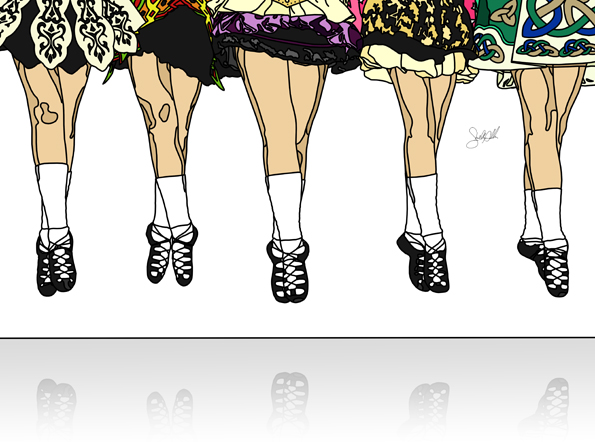 Speed, clarity and rhythm of movements will come with regular practice.
Speed, clarity and rhythm of movements will come with regular practice.
Our school invites you to join one of the brightest and most popular ethnic styles and invites you to Irish dancing. The Irish for centuries, against all odds, carefully preserved their cultural heritage, thanks to which we have the opportunity to enjoy these magnificent styles. They are more like flying than actually dancing, perhaps because of the contrast between the fixed body and the fast movements of the legs. Irish dances are beautiful and varied. There are a huge number of different constantly developing currents. We are developing the sport of modern Irish dancing, children and adults are actively training throughout the year to take part in Russian and foreign competitions. This direction gained wide popularity and became popular after the legendary performance of the show group Riverdance at the Eurovision final at 1996 year.
The main types of sports Irish dances are:
Solo by difficulty levels.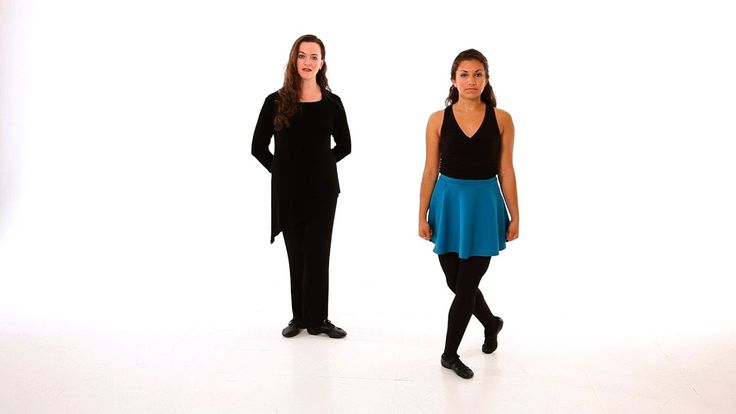
Group traditional (keili).
Staged figures with the author's choreography.
Irish dance classes are a great opportunity to develop physically, children and adults improve posture, develop flexibility. Preparation for tournaments will make your child more purposeful and disciplined, he will learn to work on himself and strive for better results, and participation in group dances will teach him to work in a team. The sports component develops the will to win in children and teaches them to cope with failures. This direction is very mobile, so this is a great leisure activity for active children. Another important feature is that most of the competitions are solo, you do not need to look for a partner to learn Irish dancing.
We accept everyone. Experience shows that the desire to practice and grow is more important than the original physical ability. With the right motivation and stable work, anyone can achieve high results. This is confirmed by the success of our dancers, who successfully perform at competitions of any level - from small Russian ones to European championships.
This is confirmed by the success of our dancers, who successfully perform at competitions of any level - from small Russian ones to European championships.
Our Irish dance school "Phoenix" is one of the best in the north of Moscow, it employs experienced trainers who try to find an approach to any student. Lessons are held in a relaxed friendly atmosphere. If you want your child to have a fun, dynamic and rewarding time, Irish dancing is a great choice. We are located near the metro Voykovskaya or Sokol (SAO) and invite all children from 4 years old to classes, as well as adults without age restrictions. There are group lessons for both beginners and advanced. More details can be found on the website below.
The Dance.Firmika.ru portal contains information about where you can sign up for Irish dance classes in Moscow: addresses and telephone numbers of dance schools and dance studios, prices for the most popular directions, student reviews. For greater convenience in using the portal and searching for a dance school, we suggest using a convenient filter by districts and metro stations. Visual tables will help you compare the cost of classes and trainings in different dance studios in the city, choosing the best option for the price.
Visual tables will help you compare the cost of classes and trainings in different dance studios in the city, choosing the best option for the price.
Irish dances can be safely called one of the oldest dance directions, the first mention of which dates back to the XI century. hard to find another similar dance in which the rhythm is so harmoniously intertwined, fun and energy.
Irish dance - style features
Irish step dance, danced solo, belongs to the demonstrative directions that originated in Ireland. Gradually developing from traditional elements, today it is a very exciting sight. Initially, the dance developed in countries where there was a large Irish diaspora, but over time it gained fans among the locals as well. This led not only to the appearance of simple demonstration performances and various shows, but also to the development of all kinds of competitions held in Ireland, the USA, England and other countries.
It is difficult to confuse the Irish dance with others - the distinctive features include an almost motionless body, hands down, fast and clear foot movements.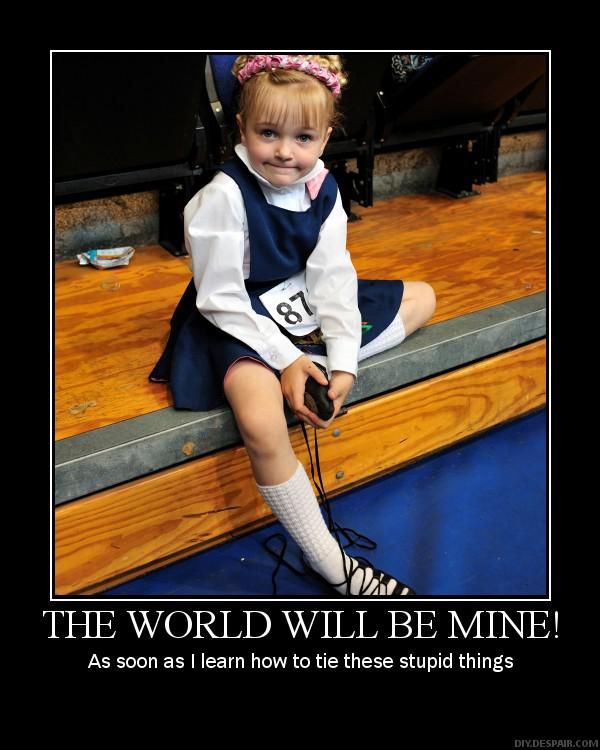 Due to the fact that the main movements of the dance involve the work of only the legs, there is also a second name for Irish solo dances - step dances. Although in Russian the word "step" usually means dances, during which sound is extracted with the help of sonorous heels. However, this does not prevent you from dancing Irish dances in shoes with soft soles.
Due to the fact that the main movements of the dance involve the work of only the legs, there is also a second name for Irish solo dances - step dances. Although in Russian the word "step" usually means dances, during which sound is extracted with the help of sonorous heels. However, this does not prevent you from dancing Irish dances in shoes with soft soles.
Irish dance steps are individual for each school and directly depends on the teacher. Each professional teacher personally develops steps for his students. All movements use the same basic elements, but in general each dance is unique.
What are the benefits of Irish dance lessons?
This is a very proud dance that inspires confidence and self-esteem dignity in a dancer. In the classroom, students learn to feel the rhythm well and music, reflecting them in every movement. Irish dance lessons teach constantly listen to your body and fully control it. Since during dance, only the legs are involved, the head, body and arms remain motionless - this teaches you to perfectly coordinate your own movements.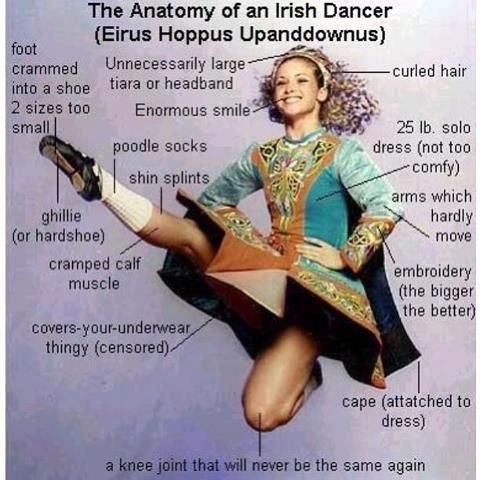
Having decided to start learning Irish dancing, you need to take care of clothes. It should be comfortable and not restrict movement. Girls fit light T-shirts, tops or blouses, tight tights or leggings, short, knee-opening skirts. You can also wear shorts. Their shoes are worth giving away preference for soft models: Czechs, ballet flats, jazz or Irish.
Irish dance: training in Moscow
Emotional and energetic Irish dances are very popular in different countries. For quite a long period of time, interest in them has not weakened, and the number of people wishing to engage in them is constantly growing. Fans of Irish dancing in Moscow have long perceived them as a serious sport that requires long-term training.
Irish dancing has an amazing energy effect on the audience. People sitting in the hall, watching the rhythmic dancers on the stage, would gladly join the dancers. Of particular interest are the unusual poses of the tap dancers: the upper part of the body is practically motionless, the arms also do not take part in the dance, but that's what the legs are capable of! They bear the main responsibility for the entire dance.
Irish dancing: from the time of the Druids to the present
Irish dancing dates back to the time of the Druids. Initially, they had a ritual orientation and were performed in a circle. However, despite their specific purpose, even then they were unusually rhythmic and emotional. In medieval Ireland, the clergy imposed a ban on hand movements during the dance, believing that it was the activity of the hands that attracted the forces of evil.
Irish dances as part of the national culture of Ireland have long been popular only in their homeland and even in America, as there are many Irish emigrants in this country. But in the last decade of the last century, several enchanting Irish dance shows appeared that turned the idea of \u200b\u200bIrish dance around the world.
"Lord of the Dance", "Gaelforce Dance", "Riverdance" - after seeing such a production once, people usually want to enjoy such a spectacle regularly. In addition, many people think about learning Irish dances in order to master all the skills of these amazing colorful movements to fiery and rhythmic music.